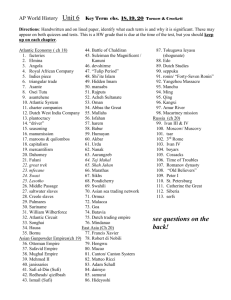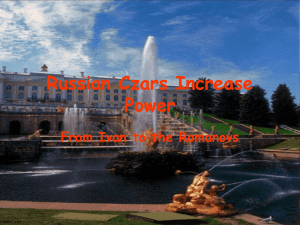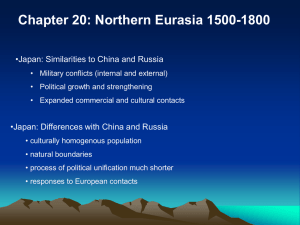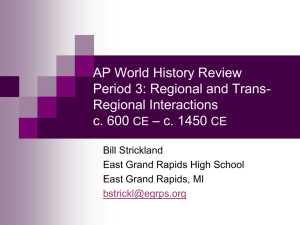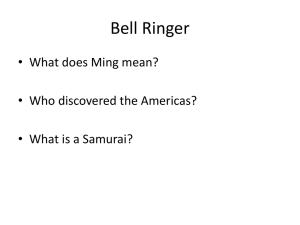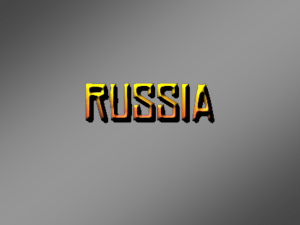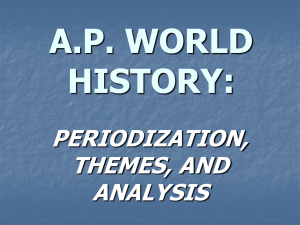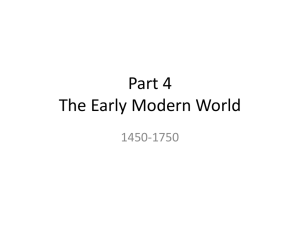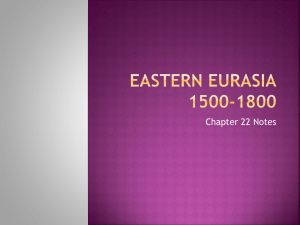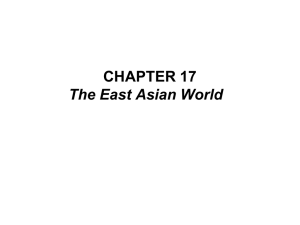Gunpowder Empires: Ottoman, Safavid, Mughal, and More
advertisement
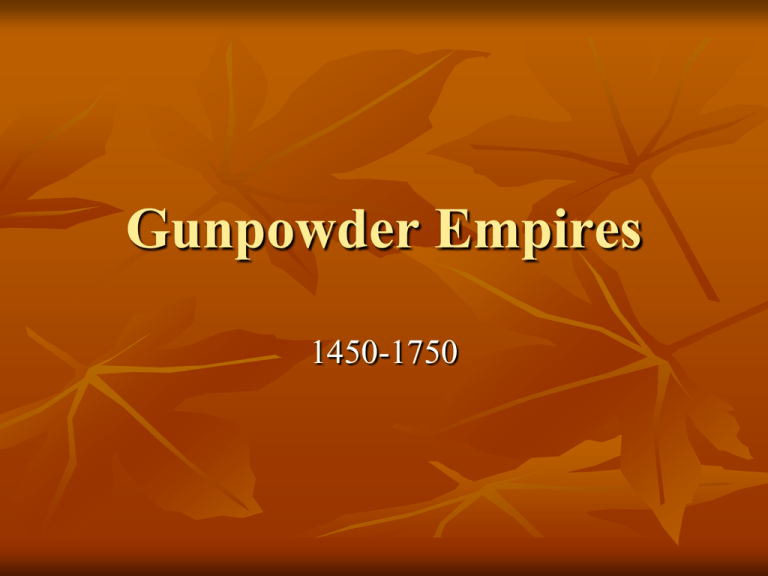
Gunpowder Empires 1450-1750 Land Based Power Europe’s empires built on sea power Asian empires land-based power around might of gunpowder Ottomans, Safavids, Mughals, Ming and Qing, and Russia Finally able to conquer nomad groups Muslim Empires Ottoman, Safavid, Mughal Emerged from central steppe nomads All had Absolute monarchs who modeled their courts after early Islamic empires Ottoman Empire Suleiman Modern day Turkey 1st people to use cannons offensively Large army of mounted and foot soldiers, Powerful navy Sultan with large bureaucracy, top official was “grand vizier” Suleiman the Magnificent most famous ruler Much trade, due to location Mostly Sunni, but diversity of people and religions More equality for women Constantinople, highly sophisticated capital Safavid Empire East of Ottoman, modern Iran Belief that “Hidden Imam” descendant of Ali would return to rule Ruler “stand-in” until then Strong army with firearms Little trade Patriarchal Mostly Shi’ite, forced conversion in 16th Century by Ismail Mughal Empire Modern day Pakistan, Afghanistan, and N. India Strong military Muslim rulers with centralized power Muslim authority over rebellious Hindu Pop. Akbar most famous ruler, tried to reconcile faiths Limited trade Land grant system based on military service New faith: Sikhism; blend of Islam and Hinduism Decline of Muslim Empires Inadequate transportation and communication: larger empires grew, harder they were to control Unruly warrior elites, inadequate bureaucracies: Military knew they were important, so often acted apart from the gov’t Rise of European rivals: European countries smaller so mobilization of human and natural resources easier, also closeness led to more competition so they were spurred to new technologies and reforms Russia Little contact with rest of Europe Greek Orthodox 1480 Ivan III (the Great) ousted the last of the Mongols Russia was left weak, but expanded under Ivan III and Ivan IV (the terrible) Expanded to Poland and across Siberia Pioneers called Cossacks sent to new territories, taking land Ivan IV died with no heir, so Romanovs took over in 1613 (until 1917) Russian nobles, Boyars, selected the new Tsar, Mikhail Peter the Great r. 1682-1725 Went to western Europe to gain aid against Turks, became fascinated with Western European technology & science Fought with Sweden for a port on the Baltic Rebuilt his capital at St. Petersburg Boyars had to shave and adopt Western dress Brought French ballet to Russia and allowed elite women to public events Stayed Absolute Monarch (did not adopt Enlightenment ideas) Continued serfdom (virtual slavery) and controlled subjects through a secret police Peter’s Palace in Moscow Expansion of Peter the Great Ming and Qing China Ming 1368-1644, replaced Yuan, brought peace and stability China mostly closed to foreigners Scholar-gentry and civil-service exams returned Junks – Zheng He, to show off wealth and power of Middle Kingdom Pirates kept them out of the ocean Repaired Great Wall and Canals Jesuits sent to Convert, allowed to remain because they knew science and technology Europeans restricted to coast Emperor lived in Forbidden City, eventually became too involved in pleasure, overthrown Qing Dynasty 1644 - 1911 Known as Manchus, conquered from the North Doubled the size of China Traded with Russia Population began to grow due to new crops: Sweet and white potatoes, Maize, peanuts Last Dynasty (yay! You know them all!!) “Grrr.” Expansion under Qing Tokugawa Shogunate Jesuits converted over 300,000, Japan felt must consolidate under a powerful shogun, Tokugawa Ieyasu 1606 Christianity outlawed, executed Japanese forbidden to travel overseas Europeans not allowed in (except Dutch) Guns virtually banned Agriculture flourished Power in hands of Samurai class Capital at Edo, now Tokyo Under Tokugawa To maintain control, Daimyos had to go to Edo every other year (this meant the Tokugawa had direct control over 50% always) Needed permission to marry or build Class structure (4 classes) Samurai (with Daimyo) – sword and topknot Farmers – made food Artisans – made stuff Merchants – lowest, made nothing Reconquista Mid 15th Century Spain united with Marriage of Fernando of Aragon and Isabel of Castile This led to three important things: Reconquista (Reconquest) of former Muslim territory Expulsion of Jews, led to severe economic problems because they were educated and skilled Voyage of Columbus Vocabulary Boyars Cossacks Manchus Jesuits Janissaries Reconquista Mughal Empire Tokugawa Shogunate mercantilism
